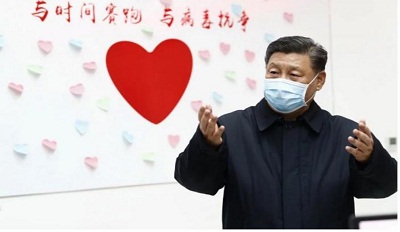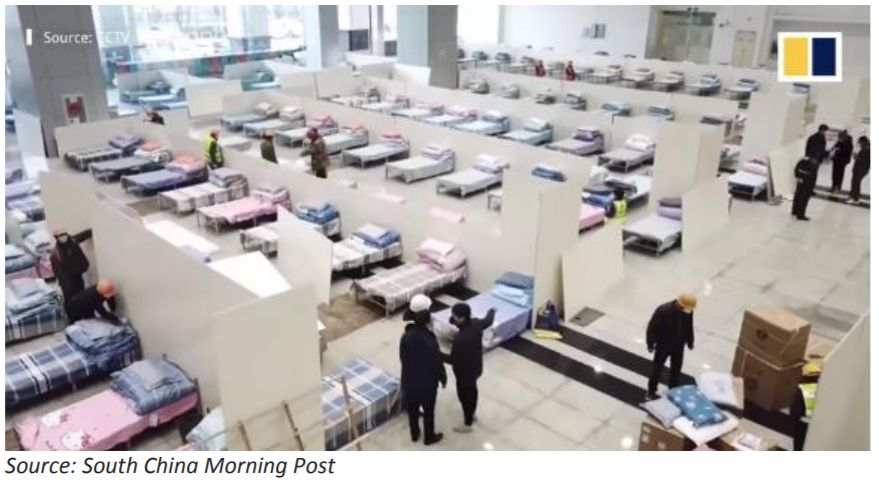
Originally published on South China Morning Post with title “Post-crisis China will Focus on Public Health and Welfare. Business Should be Prepared for a Sea Change” on February 24, 2020. All rights reserved.
As the humanitarian cost of the coronavirus epidemic mounts, economic casualties are also surfacing throughout China. More than 48 cities have issued lockdown policies, and businesses have had to repeatedly postpone the return to work following the Lunar New Year holiday.
The economic impact is estimated to far surpass that of the 2003 severe acute respiratory syndrome outbreak, given China’s greater integration in the global value chain.
The outbreak is also revealing long-standing societal problems. Many crucial gaps that have been exposed need to be filled urgently. Governmental institutions will be focusing on improving China’s entire public agenda, and not only one or two areas.
The coronavirus crisis will reshape China in a few dimensions. First, its governance system is set to become more transparent and accountable. Over the past 40 years, China has unconsciously evolved into a three-layer development model to back continued economic success.
At the top, the central government sets the national agenda, providing clear directions for the rest of the country. At the grass-roots level, fast-growing and highly dynamic entrepreneurs drive China’s growth and innovation.
In the middle, local governments compete and cooperate with each other to form regional clusters, while serving as the “glue” between the central government and grass-roots businesses.
The coronavirus crisis suggests that the three-layer model needs to broaden its scope beyond the economy, to other aspects of society, in particular welfare. Only a few proactive cities have played their role effectively in the model; most others lack the aspirations and willingness to grow with businesses and promote innovation.
After the crisis, the central government is likely to call for all localities to increase their focus on public agendas, not only on economic concerns but also in public health, and not only for top-echelon cities but also the less-developed, inland ones.
The collaboration between both state-owned and private enterprises will increase with this expanded scope. As an example of what can be achieved, the two new hospitals built in Wuhan – one in 10 days and one in 14 – were the combined effort of state-owned and private enterprises. That was quite a feat.
Secondly, cities across China will become more intelligent and connected. As China’s socioeconomic patterns change, consumption is moving from offline to online and, with the epidemic, commercial applications of new technologies in 5G, artificial intelligence and the internet of things are being accelerated.
The trade war and epidemic are hitting the Chinese economy significantly. In the short term, the government will make major fixed-asset investments to boost the macroeconomy. But, in the long term, a post-crisis China will look different.
Importantly, China is making a nationwide coordinated move to create a reliable public-health apparatus. The central government recently announced legislative and institutional support to include biosafty in the national security system.
These public projects will generate a wide range of business opportunities, predominantly in the form of public-private partnerships, where private companies help governments to build smarter cities and infrastructure, particularly in monitoring and surveillance.
Future smart cities will be more intelligent in transport management, supply chain management, emergency and disaster forecasting and preparation, and information tracking.
For example, to substantively improve the health system, Chinese cities will not only need to track people’s movements but also identify potential infections (for instance, through monitoring body temperatures) and alert nearby hospitals.
Such complex tasks require the entire health care system to be tightly integrated through big data, as well as integrated efforts between local governments and state-owned and private enterprises.
New business models catering to the changing modes of interactions will also arise, particularly in sectors such as logistics, automation, distributed working, entertainment, retail and education.
In the logistics and robotics sectors, human-to-machine and machine-to-machine interactions will accelerate. For example, at the newly built Huoshenshan Hospital in Wuhan, robots deliver food and medication, sterilise the environment and perform basic diagnostics. Automation and robotics will become increasingly prevalent and take over much of the moving of both people and things.
Increasingly, traditionally offline businesses are moving online, including in health care, retail and education. In health care, the focus will shift towards prevention and early detection, in addition to more effective diagnostics, remedies and treatment.
Technologies will enable more health care services to be provided online. The merging of offline and online services as a business model will become increasingly prevalent, and distributed working is being accepted by more people. A huge portion of the Chinese population is working remotely for the first time. WeChat Work, DingTalk, and other remote working tools are proving to be more popular than ever.
Additionally, the role of social media in our society has changed. For a long time, it was a channel for customer-to-customer and business-to-customer communication. In this crisis, it has assumed a new role as a channel of communication between people and the government. Social media has proved to be an impactful way for the government to disseminate information and an unofficial feedback loop of accountability.
The coronavirus crisis has created challenges and opportunities. In the near term, businesses operating in and with China will face more uncertainty on the manufacturing, supply chain and consumer fronts. In the medium to longer term, China is poised to reinvent itself and prioritise social welfare in its national agenda.
Governments and companies – whether state-owned, private or foreign – will collaborate across sectors to foster synergies, especially in areas such as smart cities and infrastructure. New consumer patterns, technological progress and commercial innovations will come along, further transforming the business landscape.
About the Author
Dr. Edward Tse is founder and CEO of Gao Feng Advisory Company, and a founding Governor of Hong Kong Institution of International Finance. One of the pioneers in China’s management consulting industry, he built and ran the Greater China operations of two leading international management consulting firms for a period of 20 years. He has consulted to hundreds of companies – both headquartered in and outside of China – on all critical aspects of business in China and China for the world. He also consulted to the Chinese government on strategies, state-owned enterprise reform and Chinese companies going overseas, as well as to the World Bank and the Asian Development Bank. He is the author of several hundred articles and four books including both award-winning The China Strategy (2010) and China’s Disruptors (2015) (Chinese version «创业家精神»).

